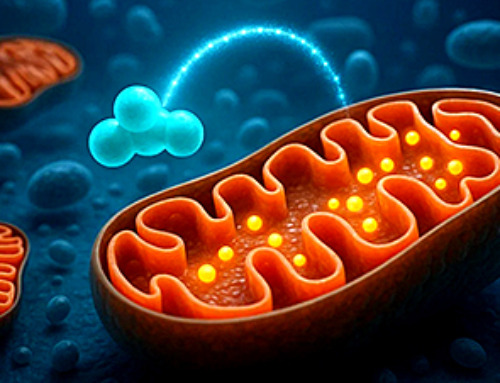Artificial intelligence (AI) comes with promises of helping coders code faster, drivers drive safer, and making daily tasks less time-consuming. But in a commentary published October 10 in the journal Joule, the founder of Digiconomist demonstrates that the tool, when adopted widely, could have a large energy footprint, which in the future may exceed the power demands of some countries.
Since 2022, generative AI, which can produce text, images, or other data, has undergone rapid growth, including OpenAI’s ChatGPT. Training these AI tools requires feeding the models a large amount of data, a process that is energy intensive. Hugging Face, an AI-developing company based in New York, reported that its multilingual text-generating AI tool consumed about 433 megawatt-hours (MWH) during training, enough to power 40 average American homes for a year.
AI’s energy footprint does not end with training. De Vries’s analysis shows that when the tool is put to work—generating data based on prompts—every time the tool generates a text or image, it also uses a significant amount of computing power and thus energy. For example, ChatGPT could cost 564 MWh of electricity a day to run.
While companies around the world are working on improving the efficiencies of AI hardware and software to make the tool less energy intensive, de Vries says that an increase in machines’ efficiency often increases demand. In the end, technological advancements will lead to a net increase in resource use, a phenomenon known as Jevons’ Paradox.
“The result of making these tools more efficient and accessible can be that we just allow more applications of it and more people to use it,” de Vries says.
Google, for example, has been incorporating generative AI in the company’s email service and is testing out powering its search engine with AI. The company processes up to 9 billion searches a day currently. Based on the data, de Vries estimates that if every Google search uses AI, it would need about 29.2 TWh of power a year, which is equivalent to the annual electricity consumption of Ireland.
This extreme scenario is unlikely to happen in the short term because of the high costs associated with additional AI servers and bottlenecks in the AI server supply chain, de Vries says. But the production of AI servers is projected to grow rapidly in the near future. By 2027, worldwide AI-related electricity consumption could increase by 85 to 134 TWh annually based on the projection of AI server production.
The amount is comparable to the annual electricity consumption of countries such as the Netherlands, Argentina, and Sweden. Moreover, improvements in AI efficiency could also enable developers to repurpose some computer processing chips for AI use, which could further increase AI-related electricity consumption.
“The potential growth highlights that we need to be very mindful about what we use AI for. It’s energy intensive, so we don’t want to put it in all kinds of things where we don’t actually need it,” de Vries says.
News
This Tiny Cellular Gate Could Be the Key to Curing Cancer – And Regrowing Hair
After more than five decades of mystery, scientists have finally unveiled the detailed structure and function of a long-theorized molecular machine in our mitochondria — the mitochondrial pyruvate carrier. This microscopic gatekeeper controls how [...]
Unlocking Vision’s Secrets: Researchers Reveal 3D Structure of Key Eye Protein
Researchers have uncovered the 3D structure of RBP3, a key protein in vision, revealing how it transports retinoids and fatty acids and how its dysfunction may lead to retinal diseases. Proteins play a critical [...]
5 Key Facts About Nanoplastics and How They Affect the Human Body
Nanoplastics are typically defined as plastic particles smaller than 1000 nanometers. These particles are increasingly being detected in human tissues: they can bypass biological barriers, accumulate in organs, and may influence health in ways [...]
Measles Is Back: Doctors Warn of Dangerous Surge Across the U.S.
Parents are encouraged to contact their pediatrician if their child has been exposed to measles or is showing symptoms. Pediatric infectious disease experts are emphasizing the critical importance of measles vaccination, as the highly [...]
AI at the Speed of Light: How Silicon Photonics Are Reinventing Hardware
A cutting-edge AI acceleration platform powered by light rather than electricity could revolutionize how AI is trained and deployed. Using photonic integrated circuits made from advanced III-V semiconductors, researchers have developed a system that vastly [...]
A Grain of Brain, 523 Million Synapses, Most Complicated Neuroscience Experiment Ever Attempted
A team of over 150 scientists has achieved what once seemed impossible: a complete wiring and activity map of a tiny section of a mammalian brain. This feat, part of the MICrONS Project, rivals [...]
The Secret “Radar” Bacteria Use To Outsmart Their Enemies
A chemical radar allows bacteria to sense and eliminate predators. Investigating how microorganisms communicate deepens our understanding of the complex ecological interactions that shape our environment is an area of key focus for the [...]
Psychologists explore ethical issues associated with human-AI relationships
It's becoming increasingly commonplace for people to develop intimate, long-term relationships with artificial intelligence (AI) technologies. At their extreme, people have "married" their AI companions in non-legally binding ceremonies, and at least two people [...]
When You Lose Weight, Where Does It Actually Go?
Most health professionals lack a clear understanding of how body fat is lost, often subscribing to misconceptions like fat converting to energy or muscle. The truth is, fat is actually broken down into carbon [...]
How Everyday Plastics Quietly Turn Into DNA-Damaging Nanoparticles
The same unique structure that makes plastic so versatile also makes it susceptible to breaking down into harmful micro- and nanoscale particles. The world is saturated with trillions of microscopic and nanoscopic plastic particles, some smaller [...]
AI Outperforms Physicians in Real-World Urgent Care Decisions, Study Finds
The study, conducted at the virtual urgent care clinic Cedars-Sinai Connect in LA, compared recommendations given in about 500 visits of adult patients with relatively common symptoms – respiratory, urinary, eye, vaginal and dental. [...]
Challenging the Big Bang: A Multi-Singularity Origin for the Universe
In a study published in the journal Classical and Quantum Gravity, Dr. Richard Lieu, a physics professor at The University of Alabama in Huntsville (UAH), which is a part of The University of Alabama System, suggests that [...]
New drug restores vision by regenerating retinal nerves
Vision is one of the most crucial human senses, yet over 300 million people worldwide are at risk of vision loss due to various retinal diseases. While recent advancements in retinal disease treatments have [...]
Shingles vaccine cuts dementia risk by 20%, new study shows
A shingles shot may do more than prevent rash — it could help shield the aging brain from dementia, according to a landmark study using real-world data from the UK. A routine vaccine could [...]
AI Predicts Sudden Cardiac Arrest Days Before It Strikes
AI can now predict deadly heart arrhythmias up to two weeks in advance, potentially transforming cardiac care. Artificial intelligence could play a key role in preventing many cases of sudden cardiac death, according to [...]
NanoApps Medical is a Top 20 Feedspot Nanotech Blog
There is an ocean of Nanotechnology news published every day. Feedspot saves us a lot of time and we recommend it. We have been using it since 2018. Feedspot is a freemium online RSS [...]





















